|
EUTHANASIA AT OUR HOSPITAL

|
The euthanasia decision for a beloved pet may be one of the most difficult choices you must face during your entire lifetime. It is hard to make a life-ending determination like this for someone who cannot tell you what his or her wishes are and, yet, a judgment call must be made. There are emotional issues such as guilt, grief, and uncertainty as well as financial and/or time commitment matters in choosing to treat or not treat an illness. Family members with differing opinions or philosophies may be involved. The decision process is arduous and everyone dreads its necessity.
You very likely have questions about how to tell whether the right time has come in addition to questions about what to expect and what the procedure is. This article is meant to guide you through these difficult issues so that you can be certain in the years to come that you made the right decision without regret.
|
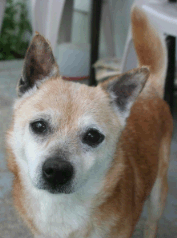
(Photocredit: MorgueFile.com)
|
WHEN IS THE RIGHT TIME?
|
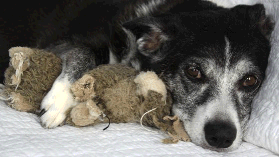
(Photocredit: MorgueFile.com)
|
Some pets simply become debilitated by age or disease to a point where their life quality deteriorates to an unacceptable level. This does not mean that improvement is not possible so it is important to seek proper counseling from your veterinarian about your pet’s condition and what may be possible to improve it.
Many medical issues that seem hopeless to a pet owner are surprisingly easy to palliate or even solve. Long-standing in-home urination problems may boil down to a bladder infection that can be resolved with antibiotics or sphincter tightening remedies. Arthritis medication can yield great improvement in mobility. Unhealing wounds may represent allergy and not cancer. Every veterinarian can tell stories of pets assumed by their owners to have terminal illness that turned out to have easily treated problems after all.
|
It is best not to make your own assumptions about the reversibility of your pet’s condition. Have your veterinarian evaluate the pet before making your decision if possible. Find out what sort of supportive care you might need to perform as primary caregiver and what the associated expenses are. Avoid making assumptions on your own and get all the options.
INVOLVE YOUR VETERINARIAN EARLY.
FIND OUT TREATMENT OPTIONS AND COSTS
BEFORE MAKING EUTHANASIA DECISIONS.
WHEN YOU’VE DONE ALL YOU CAN: LIFE QUALITY EVALUATION
|
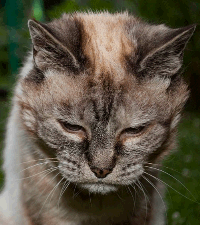
(Photo Credit: Diti Torterat
via Wikimedia Commons)
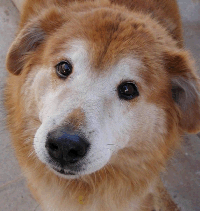
(Photocredit: R.L. used with permission)
|
As much as we hate to admit it, caregivers have limitations of what they are capable of doing and some pets are not willing to cooperate with the very treatments that will help them recover. There is a point where all the love, attention, therapies, and special foods are just not enough. Saying goodbye is emotionally devastating enough without having to suffer through uncertainty in your decision.
Some people will tell you that you will simply “know” when it is time but this idea is not really fair. Determining someone else’s life quality is not completely intuitive. Fortunately, some criteria have been developed to help make evaluation of life quality a little more definable.
- Does the pet still enjoy its favorite activities? The elderly pet does not necessarily need to continue chasing balls or jumping after frisbees but he should enjoy sleeping comfortably, favorite resting spots, the company of the owner etc.
- Is your pet eating? Basically, quality life involves eating or at least interest in food. An animal that is hungry has vitality that must be considered, though this is not the only consideration.
- Is your pet comfortable? The pet should be free of debilitating pains, cramps, aches or even the psychological pain that comes from the development of incontinence in an animal that has been housebroken its entire life.
|
|
Dr. Alice Villalobos, the veterinarian who started Pawspice, a quality of life program for terminal pets, has published a scoring system for life quality called the HHHHHMM scale. The letters stand for: Hurt, Hunger, Hydration, Hygiene, Happiness, Mobility, and More Good Days than Bad. Click here to view the scoring system.
Having a “quality of life inventory” is very helpful in seeing your pet’s situation in a more objective light.
|

(Photocredit: R.L. used with permission)
|
AFTER THE DECISION IS MADE…
You may have some questions as to the process and if there are other options.
SHOULD YOU BE PRESENT FOR THE PROCEDURE?
|
This is a very personal decision and there is no wrong answer. Many people simply cannot watch for emotional reasons. Others want to be sure their pet has at least one familiar family member there throughout. It is best to decide in advance which family members, if any, want to be present. Every owner wants to think of euthanasia as a gentle slipping into death much like falling asleep. While every effort is made to approximate this vision, the pet will probably not close its eyes, and there may be a final twitch, gasp. Some animals will urinate or release other body fluids as they relax. To help ease this transition between and death, sometimes a tranquilizer is given first thus alleviating some of the above.
HOW IS THE PROCEDURE PERFORMED?
Appropriate forms must be signed in order for the procedure to take place. If the owner is to be present, an intravenous catheter may be placed. This takes a few minutes and is usually done while the owner pays for the procedure and deals with paperwork. The payment transaction is done prior to the procedure so that the owner will not have to tearfully sign checks or credit card slips just following the emotional height of the procedure.
|
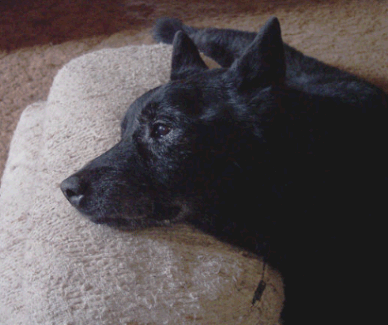
(Photocredit: MorgueFile.com)
|
The intravenous catheter serves several purposes. First, the euthanasia solution is painful if administered outside the vein. The catheter insures clean access to the vein, even if the owner is holding the pet. The catheter also allows for a sedative to be administered prior to the euthanasia solution.
After the catheter is placed, the pet re-joins the owner in the exam room. The owner may spend some last time alone with the pet if desired.
The procedure itself is very fast. If a sedative is to be used, it is given first so that the pet is euthanized from a sleeping status. The euthanasia solution, generally dyed a bright color so that it cannot be mistaken for anything else, is delivered and death comes peacefully in a matter of seconds. The owner is allowed to remain with the pet for final private goodbyes. At the end of this time after the last goodbyes and caresses are completed, the owner simply exits the room when ready and the hospital staff takes over.
Let us know in advance if you would like a lock of hair or the collar as a keepsake. A decorative clay paw print can also be requested..
HOME EUTHANASIA
Our hospital does not provide this service but there are several house call euthanasia services in our area. Please call us at 310-391-6741 for more information.
|
AFTERCARE
After the procedure is over, there are some options regarding your pet’s remains. In our area, city ordinances preclude burying pets at home though if you wish to take your pet’s remains with you, you may do so. Otherwise, a cremation service is used. If you wish to have your pet’s ashes returned to you, this can be arranged with our receptionist. A tasteful cedar box with your pet’s name engraved is provided or you may select a custom urn.
|
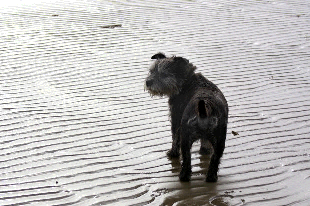
(Photocredit: MorgueFile.com)
|
The service we use for private cremation is Guardian Animal Aftercare.

(logo used with permission)
To view the urn selection click here: https://guardiananimalaftercare.com/
OTHER MEMORIAL PRODUCTS AND SERVICES:
Post a tribute.
www.in-memory-of-pets.com
Tell the world about the pet whose life and love you shared.
Buy the Urn of Your Choice
http://www.perfectmemorials.com
Artistically created urns for your pets cremains are available
from numerous sources. We have posted those companies
that have requested links in this regard.
Life Gem
lifegem.com
Cremated remains can be converted into a diamond.
Gems can be blue, red, yellow, green or clear and a gallery of rings and pendants
can be viewed on the life gem web site.
Colorful Blown Glass Float, Vase, or Other Glass Art
www.tropicalglassdesign.com/index.php?option=com_content&view=article&id=51&Itemid=67
https://www.artfromashes.com/
Cremains can be added to glass and blown into beautiful decorative orbs
(similar to Christmas tree ornaments). Vases and other artistic pieces are available.
Pet Cremation Jewelry.
https://psychecremationjewelry.com/about/pet-cremation-jewelry
Distinctive and unique memorials.
A Memorial Tree
http://urnsnw.com/memorial-tree-urns
Cremains are incorporated into a special biodegradable urn that will grow into a tree.
A Memorial Ocean Reef
www.eternalreefs.com
Ashes and concrete are mixed together to form a structure that provides a habitat for sea life.
The reef can be personalized with a message or embedded with small personal items if you wish.
Incorporate the Ashes into a Special Hourglass
www.inthelighturns.com/hourglass-urns.html
The hourglass can be of a functional size or a pendant.

Page last updated: 2/3/2022
|